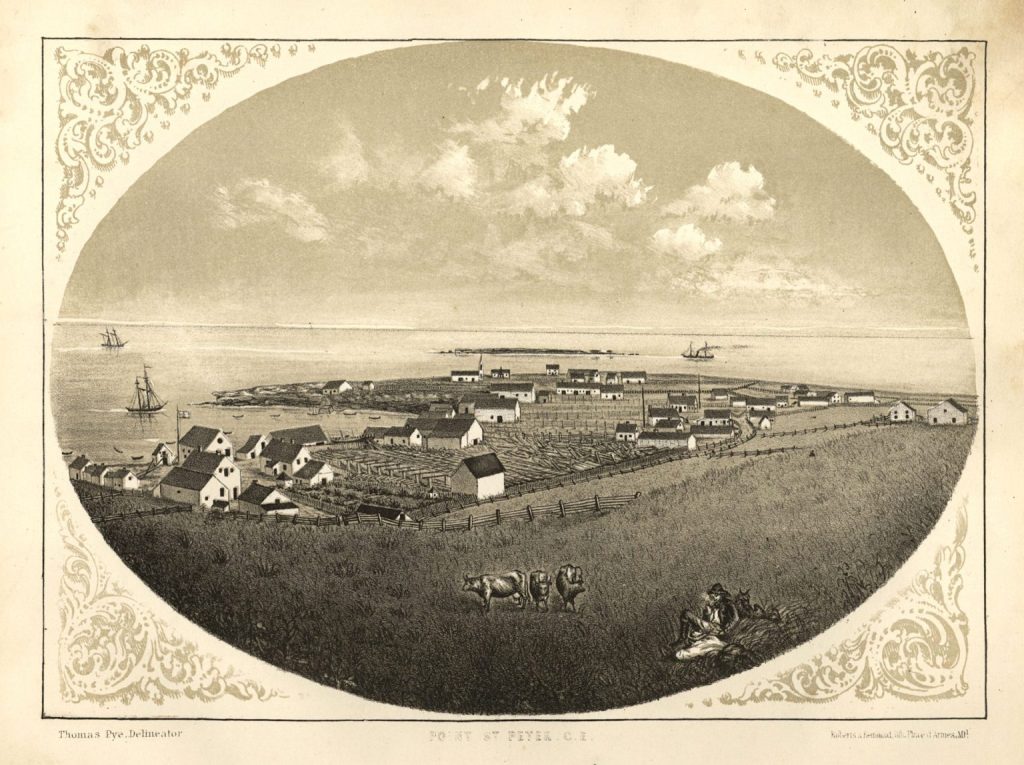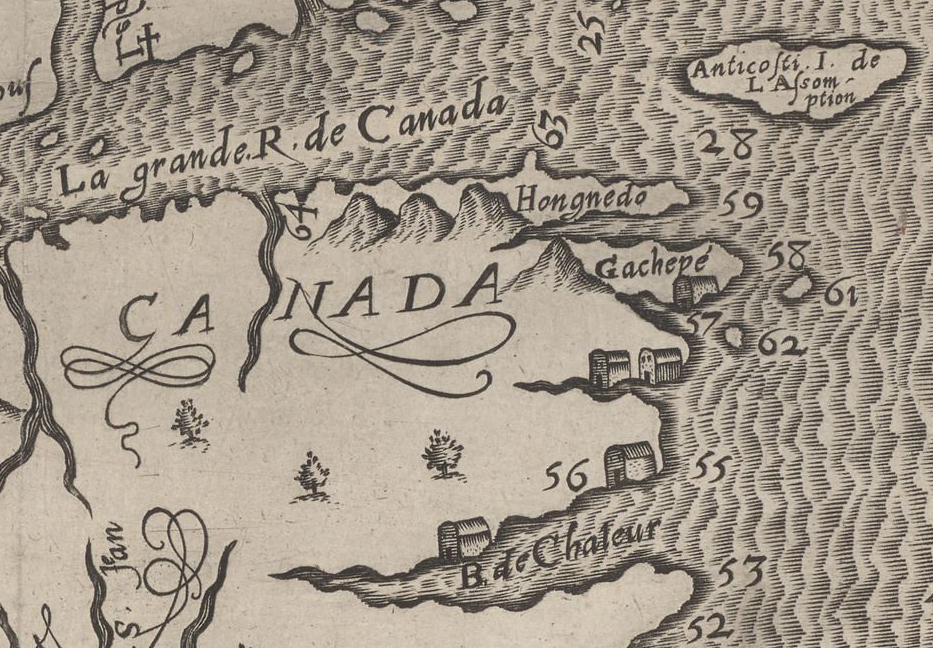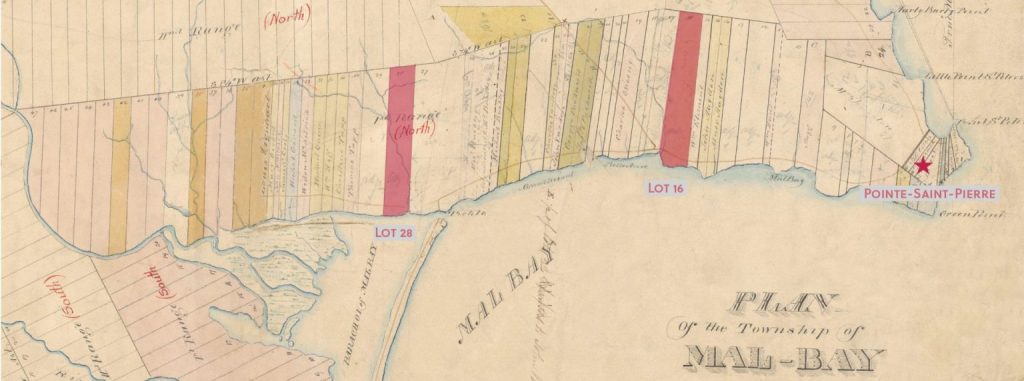
Marie Boudot (1715-1805)
Marie Boudot (Boudeau) was born more than 300 years ago in 1715, and she is the maternal ancestor of thousands of people (past and present) living on the Gaspé Peninsula and throughout North America.
Janet Harvey
President, Barachois and Area Development Committee, descendant of Marie Boudot, and resident of Belle-Anse
Marie Boudot (Boudeau) was born more than 300 years ago in 1715, and she is the maternal ancestor of thousands of people (past and present) living on the Gaspé Peninsula and throughout North America.
According to the publication Évidences de communautés métisses autour de la baie des Chaleurs, Marie was the child of Jean Boudot and an unknown Mi’kmaq or Metis woman. Documented facts about Marie and her husband Jean Chicoine are few and far between. We know that Marie and Jean had a daughter named Louise in 1744, as well as other children described later in this article. Marie also had a sister Louise, born in approximately 1720, who married Aubin LeCoufle and moved to Cascapedia. There is a record of Jean Chicoine on Point St. Peter witnessing British ships coming into the bay of Gaspé in 1746. We know that Marie and her sister were listed on the 1761 Census by Pierre du Calvet as being widows in Barachois with their children, and that Marie died in the year 1805 and was buried at Point St. Peter.
This article attempts to fill in the gaps between the known facts with reasonable presumptions, to reflect on what Marie would have experienced in her long life of 90 years.


Mi’gmaq heritage
It is well known that the Mi’kmaq have lived at the end of the Gaspé Peninsula for thousands of years. The map of Marc Lescarbot of 1609 shows a Mi`kmaq installation on the north shore of the Bay of Malbay (site no. 57) in the area between Point St. Peter and Barachois.
In 1675, the Recollect priest Father Hugolin describes a Mi’kmaq establishment near the installation at Petite Riviere (now Barachois) where Pierre Denys de la Ronde had, in 1672, established the first permanent French settlement on the Gaspé Peninsula. In 1690, 25 years before Marie was born, the British razed the installations of de la Ronde, leaving behind only cleared and tilled land. However, the Mi’kmaq surely remained in the area. Marie Boudot was conceivably a descendant of the Mi’kmaq families who have always lived in this area. There is no doubt that Marie herself was a Metis.
The early French settlers built and lived in simple log houses, while the M’ig’maq live in wigwams or teepees, installed along the coast in the summer for fishing, and moved into the woods for winter hunting. Although we do not know for sure what knowledge was taught to the two sisters, it is possible that certain Mi’gmaq traditions and skills were taught Louise and Marie by their mother.
A mixed marriage
Marie Boudot met and married Jean Chicoine sometime before 1744, when their daughter Louise was born. There is an indication that Jean Chicoine was a merchant in Barachois and that he owned a house and a store. The land in the centre of Barachois had been cleared by its first French settlers who lived there from 1672 to 1690 (Petite Riviere), so it would have been easy to settle there.
In the summer of 1758 Marie and Jean would have surely received word that Louisburg had been captured by the British in May. In September, when they saw Wolfe’s ships on the horizon, sailing into Gaspé Bay, Marie and Jean might have retreated into the woods with their 8 children, perhaps building a portable wigwam in the Mi’kmaq tradition to live in. From the hills above the bay, they would have seen the smoke rising from the burning of their house and store and realized that they would have a harsh winter ahead of them with 8 children to feed.
Sometime after the razing of the Gaspé coast by Wolfe’s troops in 1758, Marie’s sister Louise, with newborn twins, arrived in Barachois from Cascapedia. On the 1761 Census, Marie (veuve Jean Sicoin) is listed as a widow with 9 children, and her sister Louise, also a widow, (veuve Aubin LeCoufle), had 7 children. With a total of 16 children, from newborn to 18 years old, the two sisters might have been living together in a simple style house previously constructed by their husbands, or in wigwams for shelter.
What happened to the husbands Jean Chicoine and Aubin LeCoufle during of the war with the British is unknown. Jean would have still been alive in Barachois in 1760, the year after the capture of Quebec City, as his son Jean-Baptiste was born in 1761. Records of the deaths of Jean Chicoine or Aubin LeCoufle have not yet been found.
An extensive lineage
After the war ended in 1763, English-speaking men moved into the area and were given land by the government. Life would have been difficult for Marie as a single mother with 9 children. Her oldest son Aubin, at 14 years old, would have had many of the “head of the household” duties. Over the years, five of her nine children died, however four lived on to have families of their own.
Marie’s oldest daughter, Louise, married Jean Jacques Bond in 1763 at Point St. Peter at 19 years old. The following year Marie became a grandmother at 49 years of age, when her first grandson, Louis, was born. Marie still had children herself, the youngest being Jean-Baptiste at 3 three years old. Louise and Jean Bond had ten children, 8 boys carrying on the surname Bond, and 2 girls. Their descendants still live at Point St. Peter today.
In 1770, Marie’s daughter Catherine married very young, at 15 years old, to James (John) Henley. Their first child, daughter Louise Henley, was born in 1772, and they had a total of 8 children, 3 boys and 5 girls. John died in 1791, when their youngest child was less than a year old, and that year Catherine requested title to 50 acres of land at Green Point (Point St. Peter). Catherine died in 1814, at 59 years old.
Marie’s oldest son, Aubin, married a Metis woman Marie-Anne David in 1771, and they also had their first child, Michel-Antoine, in 1772. Aubin Chicoine and his family settled on a property later known as Lot 28 to the west of the Big Brook (now named Priest’s Creek) in Barachois. Aubin and Marie-Anne David had a total of 9 children, 3 boys and 6 girls. Their daughter Marguerite married William de Ste-Croix from the Channel Islands in 1803. Another daughter, Angelique, married John Tapp in 1805 (his second marriage). Their sons took the name Chicoine-dit-Cotton, later Cotton. Parts of lot 28 are owned by the Cotton and Ste-Croix families today.
In 1791, when Marie was 75 years old, her youngest son, Jean-Baptiste, married Veronique Quemeneur (dit-Laflamme) in Barachois. They had a total of 13 children, 6 boys and 7 girls. Jean-Baptiste was the first registered landowner of lot 16, located in Belle Anse, a small cove with protected anchorage for fishing boats, where he lived until he was 73, dying in 1834. Their descendants still own and live on parts of Lot 16 today.
Which of her children did Marie live with as she was getting older? Probably with her eldest daughter Louise and husband John Bond. Today Point St. Peter is a quiet collection of a few houses, but in Marie’s day she would have seen the construction of a growing community of businesses, including fishing and ship building, by immigrants from Jersey and Guernsey as well as the Loyalists who were given land for their service.
From Grande-Vallée to Maria, you can find the names Chicoine, Cotton, Ste-Croix, Bond, Tapp, and Henley in the phonebook today. Marie Boudot and Jean Chicoine’s descendants have spread out across North America – in Canada from British Columbia to Nova Scotia, and as far away as California and Alaska.

Photos (in order)
Thomas Pye, Pointe-Saint-Pierre, engraving, 1864.
Musée de la Gaspésie
Marc Lescarbot, extract of Figure de la Terre Neuve Grande Rivière de Canada et côtes de l’océan en la Nouvelle France, 1609.
ANQ. 97952
Frederick William Blaiklock, extract of Plan of the township Mal Bay showing the granted and unconceded lands in front range, 1858.
ANQ Québec. E21,SSS5,SS1,SSS1,PM,4B